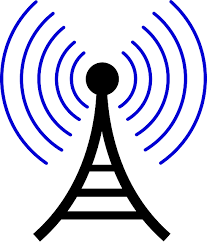
Every single market, no matter what it is, has its own abbreviations and phrases that are used by enthusiasts and specialists alike. Many times newcomers are left on their own to decipher what all of these terms mean. In the world of prepaid phones, easily the most common and confusing term is MVNO because, generally speaking, it never comes with any context clues. Either you know it or you’re lost.
So, for those of you who have been curious about what an MVNO is and why are we always talking about it, we’ll take a quick look:
What does MVNO stand for?
MVNO stands for Mobile Virtual Network Operator.
What is an MVNO?
As opposed to a company like AT&T which owns and operates its own mobile network, an MVNO is basically a company that instead creates a “virtual network” and sells it to customers. This means that the company does not actually own the network but instead purchases little pieces from companies who do. They then package it together and resell it.
Imagine it like this: You don’t own any apple trees but you want to sell apples. So you contact someone who has an apple orchard and you sign a contract with them to purchase apples each month. You then repackage the apples and sell them to other people with your branding and a sign saying that you got them from your associate’s apple orchard. You did not grow the apples and you have no control over the quality and little control over the price–you have to make a profit, after all–you are just reselling someone else’s apples.
That’s an extremely simplified explanation, but basically MVNOs do something very similar, but with wireless networks instead of fruit.
If it’s not an MVNO then what is it?
Companies that own their own networks are technically referred to as MNOs or Mobile Network Operators. Examples include Sprint, AT&T, T-Mobile, Verizon and US Cellular. These companies have paid for all of the network infrastructure and maintain the networks. They are also the ones who lease their services to various MVNOs in order to get a little more profit. All of the big four have MVNOs who use basically the same network. You can check out our constantly-updated list of MVNOs below:
Additionally, some companies own their own prepaid brands which, technically, are not considered MVNOs as the parent company runs the network. Oftentimes, these prepaid companies are actually operated by the MNO. Examples include Boost Mobile (owned by Sprint), Cricket Wireless (owned by AT&T) or MetroPCS (owned by T-Mobile).
How many MVNOs are there?
This is a harder question, as companies are constantly starting and merging and failing. As of right now, I would estimate that there are just over 60 MVNOs that we write about, and there are likely plenty that we miss. Some companies operate regionally while others offer multiple networks.
There is, of course, a bit more to the idea of MVNOs than that, but I’m hoping to give everyone the basics so that we can all be on the same page. If you have any questions, drop me a message below!]]>

